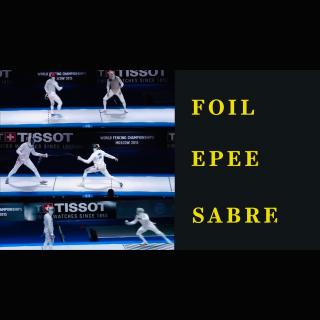
介绍:
Fencing is really different. On the surface, they look pretty similar. But what you’re looking at is in fact 3 very different events. There’s the foil, epee, and the saber. They each have their own weapon and set of rules.
The foil is the lightest of the 3 fencing weapons and it appeared around the 17th century Europe. Foil fencing rules are the most limiting. You can only hit the torso and back and only with the tip of the foil blade.
I would say for a first-time viewer of fencing, the easier one to see is epee. That’s because it’s the slowest of the three events due to the whole body being a target area. Fencers are more hesitant to initiate an attack, exposing their whole body to their opponent.
And now, the fastest event. The saber. Saber is the second fastest sport in the Olympic games after rifle shooting. That means the blade is moving almost as fast as a bullet. Instead of just thrusting, the sabre fencers can score on any part of the upper body with slashes and thrusts.
击剑运动非常与众不同。表面上,它们看起来十分相似,但是你看到的实际上是三种完全不同的比赛项目。剑术里有花剑,重剑和佩剑。它们都有着各自的武器和各自的一套规则。
花剑是三种剑术武器中最轻的一个,大约出现在17世纪的欧洲。花剑剑术规则最严格。你只能使用花剑剑身的尖端刺击躯干和后背。
我想告诉首次观看击剑的观众,更容易看懂的是重剑。因为重剑是三种比赛项目中速度最慢的一个,而这是由于全身都是目标区域。击剑手会更犹豫发起进攻,这样会向对手暴露自己的全身。
现在来说速度最快的——佩剑。佩剑是奥运会中仅次于步枪射击的速度第二快的运动。这就意味着剑身的移动几乎和子弹一样快。不再仅限于刺击,佩剑运动员可以通过劈或刺中上半身任意部位得分。
大家还在听

